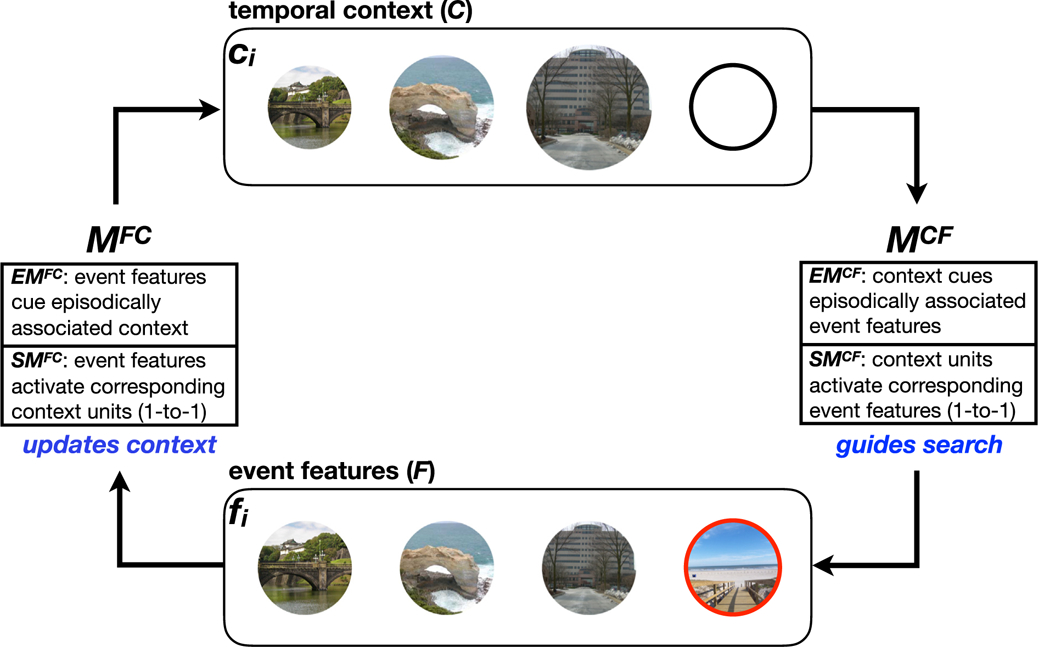Fig. 4.

Model structure. The model has two layers: a feature layer (F) and a temporal context layer (C) that interact through two associative matrices: a feature-to-context matrix (MFC) that updates context and a context-to-feature matrix (MCF) that guides search. Each matrix is a composite of an episodic (EMCF, EMFC) and semantic matrix (SMCF, SMFC). The episodic matrices represent the episodic associations formed between F and C during encoding, whereas the semantic matrices contain one-to-one connections between features in F and the corresponding units in C. When an event is “experienced” (during encoding) or “remembered” (during retrieval), its corresponding unit fi is activated in F, and activation spreads up to C via MFC. Specifically, EMFC updates C with contexts that were previously (episodically) linked to fi (“mental time travel”), and SMFC updates C by activating the unit in the context layer that directly corresponds to fi (e.g., if fi is the third unit in the feature layer, SMFC activates the third unit in the context layer). During retrieval, activation spreads down from C to F via MCF. Specifically, EMCF activates units in F that were previously (episodically) linked to contexts that match the current state of C (“episodic retrieval”), and SMCF activates units in F proportionally to how active the corresponding units are in C (“direct readout”). Units in F then compete for retrieval. The figure depicts the state of the model at time point i = 4: The first three items (from left to right) were presented successively on previous trials, and are therefore active in context (more recently experienced items are more active in C, as reflected here by the size of the circles); the fourth item (outlined in red) is being presented in the feature layer. This feature-layer representation of the fourth item will be episodically associated with the context shown here; on the next time step it will be used to update the state of C (via MFC) and the cycle will begin again. (For interpretation of the references to color in this figure legend, the reader is referred to the web version of this article.)
